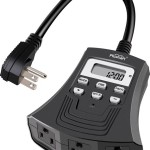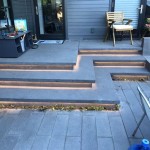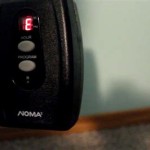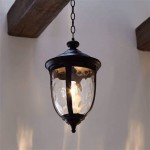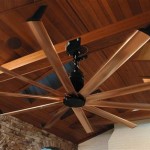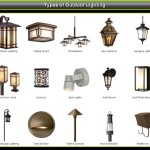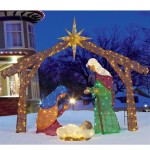High Pressure Sodium Outdoor Lighting
High-pressure sodium (HPS) lamps have been a mainstay in outdoor lighting for decades. Their distinctive orange glow is a familiar sight along roadways, in parking lots, and around industrial facilities. This article examines the technology behind HPS lighting, its advantages, disadvantages, and its evolving role in the face of newer lighting technologies.
Technology of HPS Lamps
HPS lamps produce light through an electric arc passing through a tube containing sodium vapor under high pressure, along with other elements like mercury and xenon. This arc excites the sodium atoms, causing them to emit light primarily in the yellow-orange portion of the spectrum. The high pressure within the arc tube broadens the spectral output compared to low-pressure sodium lamps, resulting in a somewhat warmer, though still monochromatic, light.
HPS lamps require a ballast to regulate the electrical current and ignite the arc. Older magnetic ballasts can be noisy and less energy-efficient than modern electronic ballasts. Electronic ballasts offer quieter operation, improved lamp life, and better control over light output, including dimming capabilities.
The construction of an HPS fixture typically involves a weather-resistant housing to protect the lamp and ballast from the elements. Reflectors within the fixture are designed to direct the light downwards, minimizing light pollution and maximizing illumination efficiency.
Advantages of HPS Lighting
HPS lighting offers several advantages that have contributed to its long-standing popularity. A key advantage is its high luminous efficacy, meaning it produces a large amount of light for a given amount of electrical power. This translates into lower operating costs compared to some older technologies, like incandescent or mercury vapor lamps.
HPS lamps also boast a long lifespan, typically in the range of 20,000 to 24,000 hours. This longevity reduces maintenance costs associated with lamp replacements, particularly in hard-to-reach locations. The relatively low cost of HPS lamps and fixtures further enhances their economic appeal.
The monochromatic nature of HPS light can be advantageous in certain applications. The yellow-orange wavelengths are less prone to scattering by fog and mist, providing better visibility in adverse weather conditions. This characteristic has made HPS lighting a popular choice for roadways and security lighting.
Disadvantages of HPS Lighting
Despite its advantages, HPS lighting has several drawbacks that are increasingly leading to its replacement by newer technologies. The most prominent disadvantage is its poor color rendering index (CRI). The CRI represents the ability of a light source to accurately reproduce the colors of objects compared to natural light. HPS lamps have a very low CRI, typically around 20-25 out of a possible 100, which means colors appear distorted and washed out under their light. This can be problematic in applications where accurate color perception is important, such as retail displays or architectural lighting.
Another disadvantage is the warm-up time required for HPS lamps to reach full brightness. It can take several minutes for the lamp to reach optimal output after being switched on. While this isn't a major concern for continuously operated lighting, it can be inconvenient in applications requiring instant illumination.
The monochromatic yellow-orange light produced by HPS lamps is aesthetically unappealing to many. It contributes to light pollution and can disrupt natural ecosystems. Growing concerns about environmental impacts and the availability of more visually appealing alternatives are driving the transition away from HPS lighting in many areas.
The Future of HPS Lighting
While HPS lighting remains in use, its dominance is waning due to the rapid advancements in LED technology. LEDs offer superior energy efficiency, higher CRI, instant on/off capability, and a wider range of color temperatures. As LED lighting costs continue to decline, they are becoming an increasingly attractive alternative to HPS for a wider range of applications.
In many municipalities and private sectors, a shift towards LED replacements for existing HPS installations is underway. This transition offers significant energy savings, improved light quality, and reduced environmental impact. The long lifespan of LEDs also contributes to lower maintenance costs over the long term.
Despite the ongoing shift towards LEDs, HPS lighting may still have a niche role in specific applications where its long lifespan and low cost are paramount. However, it is evident that the future of outdoor lighting belongs to more efficient and versatile technologies like LEDs.

How Safe Are High Pressure Sodium Lamps Compared To Led Oeo Lighting

Led Vs Hps Street Lights What S Better In 2024 Heisolar

Does Led Street Lamps Better Than High Pressure Sodium Mklights

High Pressure Sodium Flood Light General Purpose Outdoor Hps

Sodium Vapor Lamp Wikipedia

Old Style Hps Lights Vs Solar Powered Led

Lighting Comparison Led Vs High Pressure Sodium Low

Led Vs High Pressure Sodium Low Ledyi Lighting

Lutec 70 Watt Silver Outdoor High Pressure Sodium Area Light 6241 Pho The Home Depot

Lutec 70 Watt Silver Outdoor High Pressure Sodium Area Light 6241 Pho The Home Depot
Related Posts
